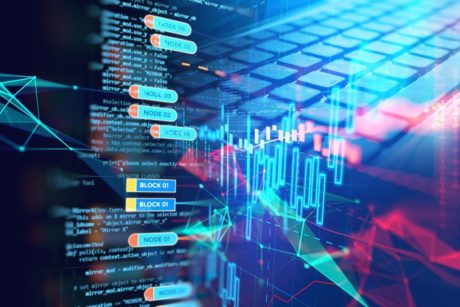Unlock the power of Machine Learning using Python! Master practical skills for a thriving career in data science.
Read more.Instructor
I am a Post Graduate Masters Degree holder in Computer Science and Engineering with experience in Android/iOS Mobile and PHP/Python Web Developer Apps
Access all courses in our library for only $9/month with All Access Pass
Get Started with All Access PassBuy Only This CourseAbout This Course
Who this course is for:
- Data Scientists
- Data Engineers
- Programmers
What you’ll learn:
- Introduction to Machine Learning
- Basics of Python
- NumPy
- Pandas
- Matplotlib
- Data visualization and preparation
- Classification and Regression models
- How Python can be used in Machine Learning
- And much more
Requirements:
- No prior knowledge is required to take this course
Welcome to our comprehensive Python for Data Science and Machine Learning Bootcamp! In this course, we’ll delve deep into the world of Machine Learning, equipping you equipping you with the expertise required to thrive in this swiftly changing domain. Harnessing the power of Python, a versatile and widely-used programming language, we’ll guide you through the intricate processes of preparing machines for predictive testing.
Course Highlights:
- Focused on Machine Learning: Our bootcamp places a central focus on Machine Learning, delivering practical knowledge and hands-on experience in this dynamic field.
- Problem-solving Approach: Drawing a parallel to your preparation for Mathematics tests, we’ll adopt a problem-solving approach. Just as you tackle mathematical problems to hone your skills, we’ll work with sample data, labeling them as training input and training output, respectively.
- Real-world Application: Imagine your machine as a student preparing for a test. We’ll train it on a set of problems (training input) and their solutions (training output). When faced with new, similar problems (testing input) later on, your machine must predict the correct answers (predicted output). The accuracy of these predictions is crucial, reflecting the experiences of a machine learning engineer and a data scientist in their professional journey.
- Python in Machine Learning: In this bootcamp, you’ll discover the pivotal role Python plays in the realm of Machine Learning. Python’s versatility and extensive libraries make it a go-to language for data scientists and machine learning engineers. As you navigate through the course, you’ll harness Python’s power to implement various techniques and evaluation measures, enhancing the accuracy of your models.
- Lucrative Careers in Machine Learning and Data Science: Machine Learning and Data Science have become cornerstones of the tech industry. By enrolling in this course, you’re not just learning; you’re investing in your future. Acquiring these skills will equip you to compete in the job market, opening doors to lucrative opportunities in the ever-growing fields of Machine Learning and Data Science.
Embark on this transformative exploration into the realm Machine Learning and data Science using Python. Enhance your skills, amplify your career opportunities, and emerge as a skilled professional in these state-of-the-art technologies. Join today and unleash the capabilities of Python in the field of Machine Learning!
If you enjoyed this course, you can check out more of my courses available on My Profile here on Skill Success!
Our Promise to You
By the end of this course, you will have learned about Machine Learning using Python.
10 Day Money Back Guarantee. If you are unsatisfied for any reason, simply contact us and we’ll give you a full refund. No questions asked.
Get started today and learn more about Machine Learning.
Course Curriculum
| Section 1 - Introduction | |||
| Course Overview And Table Of Contents | 00:00:00 | ||
| Introduction To Machine Learning Part 1 – Concepts , Definitions And Types | 00:00:00 | ||
| Introduction To Machine Learning Part 2 – Classifications And Applications | 00:00:00 | ||
| System And Environment Preparation Part 1 | 00:00:00 | ||
| Important: TensorFlow Incompatibility | 00:00:00 | ||
| System And Environment Preparation Part 2 | 00:00:00 | ||
| Course Resources | 00:00:00 | ||
| Section 2 - Basics Of Python | |||
| Assignment | 00:00:00 | ||
| Flow Control | 00:00:00 | ||
| Functions | 00:00:00 | ||
| Data Structures | 00:00:00 | ||
| Section 3 - Basics Of NumPy And Matplotlib | |||
| NumPy Array | 00:00:00 | ||
| NumPy Data | 00:00:00 | ||
| NumPy Arithmetic | 00:00:00 | ||
| Matplotlib | 00:00:00 | ||
| Section 4 - Basics Of Pandas | |||
| Basics Of Pandas Part 1 | 00:00:00 | ||
| Basics Of Pandas Part 2 | 00:00:00 | ||
| Section 5 - CSV Data File | |||
| Understanding The CSV Data File | 00:00:00 | ||
| Load And Read CSV Data File Using Python Standard Library | 00:00:00 | ||
| Load And Read CSV Data File Using NumPy | 00:00:00 | ||
| Load And Read CSV Data File Using Pandas | 00:00:00 | ||
| Section 6 - Dataset Summary | |||
| Peek, Dimensions And Data Types | 00:00:00 | ||
| Class Distribution And Data Summary | 00:00:00 | ||
| Explaining Correlation | 00:00:00 | ||
| Explaining Skewness – Gaussian And Normal Curve | 00:00:00 | ||
| Section 7 - Dataset Visualization | |||
| Using Histograms | 00:00:00 | ||
| Using Density Plots | 00:00:00 | ||
| Box And Whisker Plots | 00:00:00 | ||
| Multivariate Dataset Visualization – Correlation Plots | 00:00:00 | ||
| Multivariate Dataset Visualization – Scatter Plots | 00:00:00 | ||
| Section 8 - Data Preparation | |||
| Data Preparation (Pre-Processing) – Introduction | 00:00:00 | ||
| Re-Scaling Data Part 1 | 00:00:00 | ||
| Re-Scaling Data Part 2 | 00:00:00 | ||
| Standardizing Data Part 1 | 00:00:00 | ||
| Standardizing Data Part 2 | 00:00:00 | ||
| Normalizing Data | 00:00:00 | ||
| Binarizing Data | 00:00:00 | ||
| Section 9 - Feature Selection | |||
| Introduction | 00:00:00 | ||
| Uni-Variate Part 1 – Chi-Squared Test | 00:00:00 | ||
| Uni-Variate Part 2 – Chi-Squared Test | 00:00:00 | ||
| Recursive Feature Elimination | 00:00:00 | ||
| Principal Component Analysis (PCA) | 00:00:00 | ||
| Feature Importance | 00:00:00 | ||
| Section 10 - Algorithm Evaluation Techniques | |||
| Refresher Session – The Mechanism Of Re-Sampling, Training And Testing | 00:00:00 | ||
| Introduction | 00:00:00 | ||
| Train And Test Set | 00:00:00 | ||
| K-Fold Cross Validation | 00:00:00 | ||
| Leave One Out Cross Validation | 00:00:00 | ||
| Repeated Random Test-Train Splits | 00:00:00 | ||
| Section 11 - Algorithm Evaluation Metrics | |||
| Introduction | 00:00:00 | ||
| Classification Accuracy | 00:00:00 | ||
| Log Loss | 00:00:00 | ||
| Area Under ROC Curve | 00:00:00 | ||
| Confusion Matrix | 00:00:00 | ||
| Classification Report | 00:00:00 | ||
| Mean Absolute Error – Dataset Introduction | 00:00:00 | ||
| Mean Absolute Error | 00:00:00 | ||
| Mean Square Error | 00:00:00 | ||
| R Squared | 00:00:00 | ||
| Section 12 - Classification Algorithm Spot Check | |||
| Logistic Regression | 00:00:00 | ||
| Linear Discriminant Analysis | 00:00:00 | ||
| K-Nearest Neighbors | 00:00:00 | ||
| Naive Bayes | 00:00:00 | ||
| Cart | 00:00:00 | ||
| Support Vector Machines | 00:00:00 | ||
| Section 13 - Regression Algorithm Spot Check | |||
| Linear Regression | 00:00:00 | ||
| Ridge Regression | 00:00:00 | ||
| Lasso Linear Regression | 00:00:00 | ||
| Elastic Net Regression | 00:00:00 | ||
| K-Nearest Neighbors | 00:00:00 | ||
| Cart | 00:00:00 | ||
| Support Vector Machines | 00:00:00 | ||
| Section 14 - Compare Algorithms | |||
| Choosing The Best Machine Learning Model Part 1 | 00:00:00 | ||
| Choosing The Best Machine Learning Model Part 2 | 00:00:00 | ||
| Section 15 - Pipelines | |||
| Data Preparation And Data Modelling | 00:00:00 | ||
| Feature Selection And Data Modelling | 00:00:00 | ||
| Section 16 - Performance Improvement | |||
| Ensembles – Voting | 00:00:00 | ||
| Ensembles – Bagging | 00:00:00 | ||
| Ensembles – Boosting | 00:00:00 | ||
| Parameter Tuning Using Grid Search | 00:00:00 | ||
| Parameter Tuning Using Random Search | 00:00:00 | ||
| Section 17 - Export, Save And Load Machine Learning Models | |||
| Pickle | 00:00:00 | ||
| Joblib | 00:00:00 | ||
| Section 18 - Finalizing A Model | |||
| Finalizing A Model – Introduction And Steps | 00:00:00 | ||
| Finalizing A Classification Model – The Pima Indian Diabetes Dataset | 00:00:00 | ||
| Quick Session: Imbalanced Data Set – Issue Overview And Steps | 00:00:00 | ||
| Iris Dataset: Finalizing Multi-Class Dataset | 00:00:00 | ||
| Finalizing A Regression Model – The Boston Housing Price Dataset | 00:00:00 | ||
| Section 19 - Real-Time Predictions | |||
| Using The Pima Indian Diabetes Classification Model | 00:00:00 | ||
| Using Iris Flowers Multi-Class Classification Dataset | 00:00:00 | ||
| Using The Boston Housing Regression Model | 00:00:00 | ||




